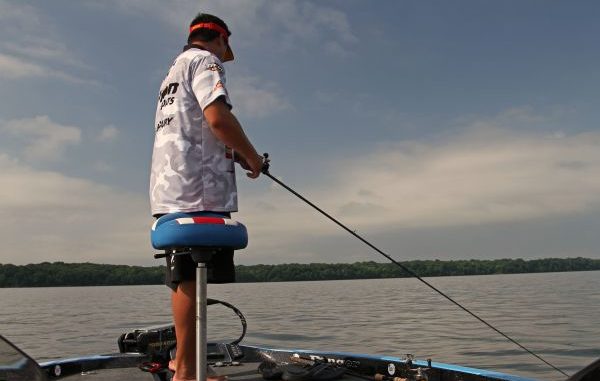
Deep water alone offers no promise of bass. Opportunity level, however, increases with the presence of fish-friendly features like ledges, humps, deep stumps, etc.
That’s why deep cranking without close attention to your sonar unit is a shot in the dark, at best.
“Electronics are key to any offshore scenario,” said cranking expert Marcus Sykora, the 2014 Bass Fishing League All-American champ. “With the technology that surrounds GPS, mapping and side-imaging, you can see every little detail and contour.”
With his eye on his Humminbird 1199 side-imaging unit, Sykora said he’ll usually start his search for deeper largemouth by examining the area’s contour.
“I use my (sonar unit) to really find any subtle points, ditches, humps or other unique identifiers to the contour,” he said. “I am obviously looking for the bass on the structure, but I always make note of any isolated targets like wood, stumps or shell beds because these are the things that I rely on (to concentrate the bass).”
It’s important to note, Sykora said, is that electronics will not only show you the big groups of fish, but occasionally one of those sneaky little spots that holds a key fish or two.
“Just because you don’t see the mother lode there now, that doesn’t mean you can’t catch an isolated kicker fish off the targets,” he said. “I also rely on my graphs to really key me in on the most frequent depth of suspended bait and fish. This will help identify the thermocline, if there is one, and also the most-favorable depth to help me identify the range that I should be targeting.”


